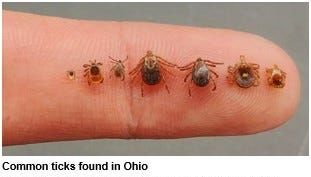Search results
People also ask
Is Lyme disease serious?
Can Lyme disease cause death?
Does Lyme disease affect children more than adults?
Feb 10, 2023 · Your risk for getting Lyme disease depends on if you spend time where they are likely to live. This includes the: Region. Deer ticks that carry Lyme disease are widespread. They are mostly found in the upper Midwest, the northeastern and mid-Atlantic states, and in south central and southeastern Canada. The castor bean tick is found throughout ...
Mar 28, 2023 · Table of Contents. View All. Stages. Stage 1. Stage 2. Stage 3. Complications. Lyme disease is curable. Most people who are infected with the tick-borne illness make a full recovery after treatment with antibiotics.
Sep 26, 2022 · By Age and Gender. Causes and Risk Factors. Lyme disease is an illness transmitted by ticks that carry the Borrelia burgdorferi bacterium. It is the most common vector-borne illness in the United States and affects an estimated 476,000 Americans yearly.
- Kathi Valeii
May 15, 2024 · Key points. Untreated Lyme disease can produce a wide range of symptoms, depending on the stage of infection. These include fever, rash, facial paralysis, an irregular heartbeat, and arthritis.
May 15, 2024 · Overview. Lyme disease is an illness caused by the bacteria Borrelia burgdorferi and spread by blacklegged ticks. Although most patients recover completely when treated with a 2- to 4-week course of oral antibiotics, about 5-10% can have prolonged symptoms of fatigue, body aches, or difficulty thinking as a result of their infection.
Available Lyme disease data including how many people get Lyme disease, and where.
Getty Images. Lyme disease is a bacterial infection. It often causes a rash and can also cause mild symptoms that include fever, headache, and fatigue, which can be treated with a short course of antibiotics. But Lyme disease can become serious, especially if not treated early.


